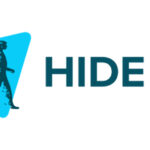Rybelsus vs. Ozempic For Weight Loss Type 2 diabetes drugs containing semaglutide, a GLP-1 receptor agonist, are gaining popularity for weight loss due to endorsements by celebrities and social media. Semaglutide helps with blood sugar management and satiety, making it an effective tool for weight loss. While Ozempic is one of the most well-known semaglutide medications, there are other options available in the market. However, it’s important to note that these drugs should only be used under the guidance of a healthcare professional, as they may have side effects and are not suitable for everyone. A balanced diet and regular exercise should also be incorporated into any weight loss plan.
Rybelsus and Ozempic are two medications used to treat type 2 diabetes, with Rybelsus being an oral form of semaglutide and Ozempic being an injectable form. While they both work similarly to regulate blood sugar levels, there are some differences between the two medications that patients should be aware of. For example, Rybelsus may be better suited for patients who prefer not to use needles or have trouble with injections. However, it may also cause more gastrointestinal side effects than Ozempic. As with any medication, it is important to discuss the potential benefits and risks with your healthcare provider before starting treatment.
Outlines Of Guide
ToggleWhat Is Rybelsus?
Rybelsus, which contains semaglutide, is an oral drug used to manage blood sugar levels in individuals with type 2 diabetes. Similar to Ozempic, Rybelsus is a glucagon-like peptide-1 receptor agonist (GLP-1RA) and is designed to be taken once daily. The FDA has approved Rybelsus for use in conjunction with diet and exercise to manage blood sugar levels in individuals with type 2 diabetes. By mimicking the effects of incretin hormones produced in the body, Rybelsus helps stimulate insulin secretion, suppress glucagon production, and slow gastric emptying, ultimately leading to better glycemic control. It’s important to consult with a healthcare provider before starting any new medication or treatment plan for type 2 diabetes.
GLP-1, a hormone naturally created in the intestines, is mimicked by semaglutide (the active ingredient in Rybelsus) to elevate its levels in the body. This slows gastric emptying, leading to earlier and prolonged feelings of fullness during and after a meal compared to the short-acting natural hormone. Florence Comite, M.D., a physician scientist in endocrinology and founder of the Comite Center for Precision Medicine and Health in New York City, explains that Rybelsus stimulates the pancreas to release insulin after eating and decreases the liver’s production of glucose, improving glycemic control.
What Is Ozempic?
Ozempic is an injectable medication that contains semaglutide and is classified as a GLP-1 receptor agonist. The drug has been approved by the FDA for treating type 2 diabetes when used alongside a balanced diet and exercise regimen. Additionally, it has been approved to reduce the risk of serious cardiac events such as heart attack, stroke, or death in people with type 2 diabetes who also have heart disease. Studies have shown that Ozempic can help lower blood sugar levels and aid in weight loss as well. As with any medication, it is important to consult with a healthcare professional before starting treatment with Ozempic to ensure its safety and effectiveness for your specific situation.
Although Ozempic is primarily prescribed to manage type 2 diabetes, it is sometimes used off-label as a weight loss medication in overweight or obese individuals. This is because the drug has been shown to reduce appetite and promote feelings of fullness, which can lead to lower calorie intake and subsequent weight loss. However, it’s important to note that using Ozempic for weight loss should only be done under the supervision of a healthcare provider, as there are potential side effects and risks associated with its use.
Dr. Comite explains that Ozempic, similar to Rybelsus, triggers insulin secretion after meals and inhibits excessive glucose production and release from the liver. Additionally, she notes that it prolongs the time food takes to leave the intestines, leading to a longer feeling of fullness.
Rybelsus vs. Ozempic: What’s the Difference?
According to Dr. Comite, Novo Nordisk produces both Rybelsus and Ozempic, two medications used to treat type 2 diabetes. While they share the same manufacturer, there are notable differences between the two drugs. Firstly, they differ in their route of administration. Rybelsus is taken orally as a tablet, while Ozempic is administered via injection. Secondly, they vary in frequency and strength. Ozempic is typically injected once a week and has a higher potency compared to Rybelsus which is taken daily at a lower dose. It’s essential to consult with your healthcare provider before starting any new medication to understand which one is the most suitable for you based on your medical history and current health condition.
Form and Frequency
Rybelsus and Ozempic differ in how they are consumed. Rybelsus is taken orally once a day as a pill, while Ozempic is injected subcutaneously once a week. Both medications regulate blood sugar levels in type 2 diabetes patients, but the difference in delivery methods may affect patient preferences and adherence to treatment. Healthcare providers should discuss these options with patients to help them choose the most suitable medication for their lifestyle.
- Rybelsus: Take one tablet daily by mouth in the morning, 30 minutes before eating, with 4 ounces of water or less. Swallow the tablets whole and do not crush, split, or chew them.
- Ozempic: The weekly injection is provided in a prefilled, single-dose pen and can be taken at any time on the same day each week, with or without meals.
Dosage
The starting dosage for any medication can be increased over time based on the results and tolerance level of the patient. According to Dr. Comite, Rybelsus has a higher dosage than Ozempic because semaglutide is not easily absorbed through the stomach as compared to when it is injected subcutaneously (under the skin). This means that a higher dose is required to achieve the desired therapeutic effect. It is essential to follow your doctor’s prescribed dosage and not make any changes without consulting them first.
- Rybelsus: You can get it in 3 milligram, 7 milligram, and 14 milligram options. The starting dose for treatment is 3 milligrams per day for 30 days, then it’s increased to 7 milligrams. The highest dose is 14 milligrams per day.
- Ozempic: You can get it in 0.25 mg, 1 mg, and 2 mg strengths. The initial dose is 0.25 mg for four weeks, then it’s increased to 0.5 mg. After that, the dosage can be raised by 0.5 mg every 30 days, up to a maximum of 2 mg per week.
Cost
If you have been prescribed Rybelsus or Ozempic for diabetes, you may be wondering about insurance coverage for these medications. Generally, insurance companies will cover a large portion of the cost, but it’s important to note that coverage can vary depending on your specific plan. It’s always a good idea to check with your insurance provider to find out what your out-of-pocket costs will be for these medications. Additionally, there are patient assistance programs available that may be able to help offset the cost of Rybelsus or Ozempic if you are experiencing financial difficulties.
Concerning the cost that needs to be paid for each medication:
Rybelsus: The cost of a package containing 3 milligram tablets, 7 milligram tablets, and 14 milligram tablets is $935.77 each on average.
Ozempic: The average price for 0.25 or 0.5 milligrams (1 x 1.5-mL pen) is $935.77. The average price for 1 milligram (1 x 3-mL pen) is $935.77, while the average price for 2 milligrams (1 x 3-mL pen) is also $935.77.
Side Effects and Safety
Dr. Comite states that Rybelsus and Ozempic, both containing the active ingredient semaglutide, have similar common side effects. Novo Nordisk notes that some of these common side effects include:
- Nausea
- Vomiting
- Abdominal pain
- Diarrhea
- Constipation
- Gas
- Bloating
- Decreased appetite
There is also the potential for more severe side effects.
- Pancreatitis (inflammation of the pancreas) that may cause severe, persistent abdominal pain with or without vomiting.
- Changes in vision, including blurry vision and worsening of diabetic retinopathy, a condition causing vision loss and blindness.
- Hypoglycemia (low blood sugar), especially when combined with other insulin-reducing diabetes medications.
- Gastrointestinal obstruction caused by slowed passage of waste through the stomach and intestines.
- Kidney problems, including loss of kidney function and kidney failure caused by dehydration due to nausea, vomiting and diarrhea.
- Anaphylaxis (severe, life-threatening allergic reaction) that results in swelling of the face, lips, tongue or throat, difficulty breathing or swallowing, severe rash/itching, dizziness, fainting or rapid heartbeat.
- Gallbladder problems that may cause abdominal pain, fever, jaundice (skin or eye yellowing) and clay-colored stool.
- Medullary Thyroid tumors and cancer; signs include a lump or swelling in the neck, hoarseness, difficulty swallowing and shortness of breath.
Novo Nordisk states that Rybelsus and Ozempic are not recommended for use in the following groups.
- People who have a personal or family history of medullary thyroid carcinoma (MTC), which is a rare form of thyroid cancer.
- Individuals suffering from multiple endocrine neoplasia syndrome type 2 (MEN 2), an uncommon endocrine disorder and a risk factor for MTC
- Pregnant and breastfeeding individuals
- Individuals with type 1 diabetes
Both medications carry a boxed warning for thyroid cancer, which is the most serious safety warning provided by the Food and Drug Administration (FDA). Animal studies have shown that semaglutide (the active component in Rybelsus and Ozempic) led to the development of thyroid cancer cell tumors in rodents.
Which Is More Effective: Rybelsus or Ozempic?
“No head-to-head studies have compared doses of oral semaglutide (7 milligrams and 14 milligrams) versus once-weekly subcutaneous semaglutide (0.5 milligrams and 1 milligram),” says Dr. Comite. However, separate studies show that Rybelsus and Ozempic deliver similar reductions in glucose levels and weight, she says.
According to a 2021 study, individuals with type 2 diabetes who controlled their condition through diet and physical activity achieved a 1.6% decrease in HbA1c levels after 30 weeks when given the highest dose of subcutaneous semaglutide (1 milligram). In contrast, those who were administered the highest dose of oral semaglutide (14 milligrams) experienced a 1.4% reduction after 26 weeks. Furthermore, the two groups had average weight losses of 9.9 pounds and 8.2 pounds, correspondingly. Novo Nordisk recently stated that they do not endorse the use of Ozempic or Rybelsus for anything other than their FDA-approved purposes, as neither medication is authorized for chronic weight management or cosmetic weight loss.
How To Lose Weight Fast 2025: According To Experts
Normal Blood Sugar Levels By Age Chart
How Much Do Dental Implants Cost
Rybelsus vs. Ozempic: Which One Should You Take?
According to Dr. Igel, health insurance is a significant consideration when choosing between Ozempic and Rybelsus due to their high cost without insurance coverage. Additionally, the availability of these medications at pharmacies may also impact the decision-making process. Currently, Ozempic has been experiencing nationwide shortages that are expected to continue through 2025, which could make it more challenging for patients to access this medication. It is essential for healthcare providers to consider these factors when discussing treatment options with their patients and work with them to find the most suitable and affordable option.
When it comes to choosing between medications like Ozempic and Rybelsus, personal preference plays a significant role. Some individuals may not be comfortable using an injectable medication and may prefer Rybelsus, while others may prefer the convenience of weekly dosing offered by Ozempic over taking a pill every day. To optimize treatment selection, Dr. Igel suggests that prescribing clinicians should have an open discussion with each patient to weigh the pros and cons of both medications. This approach can help ensure that patients receive personalized care that is best suited for their unique needs and preferences.










































